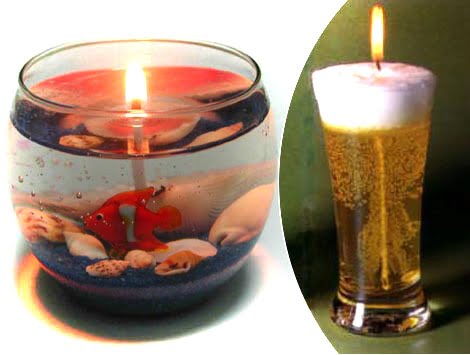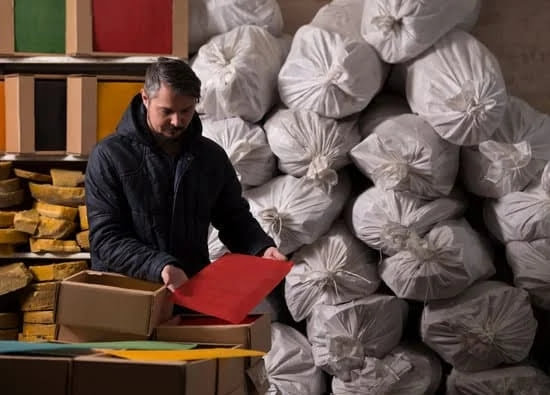Candle making can be a rewarding and creative hobby, but one of the challenges that many beginners face is keeping wicks in place. Learning how to keep wicks in place when making candles is crucial for ensuring that your finished products burn evenly and safely. In this article, we will explore the various aspects of wick placement, from the basics of measuring and positioning to troubleshooting common issues and exploring alternative methods for securing wicks.
The way you position your wicks in a candle can have a significant impact on how it burns. Properly securing the wick ensures that it stays centered as the candle burns, allowing for an even distribution of wax and preventing tunneling. Understanding the importance of keeping wicks in place is essential for anyone who wants to create high-quality, professional-looking candles at home.
In the following sections, we will delve into the basics of wick placement, discuss different tools and techniques for securing wicks, explore how choosing the right wick can impact stability, and provide best practices for ensuring that your wicks stay in place during the pouring process.
Whether you’re a beginner or an experienced candle maker looking to troubleshoot common issues with wick movement, this article will provide valuable insights and practical tips for maintaining wick stability and creating beautiful, long-lasting candles.
The Basics of Wick Placement
When it comes to making candles, one of the most important aspects to consider is the placement of wicks. Properly positioning wicks in candle containers is crucial for ensuring that the candle burns evenly and effectively. There are several key tips to keep in mind when measuring and positioning wicks in candle containers.
First and foremost, it’s essential to measure the appropriate length of wick for your candle container. A general rule of thumb is to cut the wick so that it is approximately half an inch taller than the height of the container.
This allows for enough wick to be exposed for burning without creating excessive smoke or soot. Additionally, using a wick holder or centering device can help keep the wick in place as you pour the wax into the container.
There are different types of wick holders available, including metal centering devices and adhesive stickers. Metal centering devices are typically used for larger candles, while adhesive stickers are ideal for smaller containers.
These tools help ensure that the wick stays centered and straight as the wax hardens, preventing it from shifting or leaning to one side. Knowing how to keep wicks in place when making candles is essential for both safety and aesthetic reasons; following these basic tips will help you create beautiful, high-quality candles every time.
| Tips for Wick Placement | Benefits |
|---|---|
| Measure appropriate length of wick | Prevents excessive smoke or soot |
| Use a wick holder or centering device | Keeps the wick in place during pouring process |
| Select right type of holder (metal vs adhesive) | Ensures proper positioning based on container size |
Different Wick Holders and Their Uses
When making candles, keeping the wicks in place is essential for ensuring that the candle burns properly and evenly. There are various tools and techniques available for securing wicks in place during the candle-making process. One common tool used for this purpose is a wick holder, which comes in different forms and serves the important function of keeping the wick centered and straight as the wax solidifies.
One popular type of wick holder is the metal wick sustainer, which is typically used for container candles. These small metal bases have a central hole through which the wick is threaded, allowing it to be held firmly in place at the bottom of the container. Another option is a wooden clothespin, which can be placed horizontally across the top of the container with the wick secured between its jaws to keep it straight and taut as the wax cools.
For larger pillar or taper candles, a different approach may be needed to keep the wick in place. In these cases, a simple yet effective technique involves using adhesive putty or hot glue to secure the base of the wick to the bottom of the mold before pouring in the wax. This helps to prevent any movement or floating of the wick as the wax sets, ensuring a well-centered and stable burn.
In addition to these traditional tools and techniques, some candle makers also utilize innovative methods for securing wicks in their homemade candles. For example, some may choose to incorporate decorative elements such as dried flowers or stones into their candle designs while using them to hold down and stabilize their wicks during the pouring process. This not only serves a functional purpose but also adds a unique aesthetic touch to their creations.
| Wick Holder Type | Uses |
|---|---|
| Metal Wick Sustainer | Secures wicks at bottom of container candles |
| Wooden Clothespin | Holds wicks straight and taut in container candles |
| Adhesive Putty/Hot Glue | Secures base of wick in pillar or taper candle molds |
Choosing the Right Wick for Your Candle
When it comes to making candles, selecting the right wick is crucial for ensuring that it stays in place throughout the burning process. The type and size of the wick can greatly impact its stability within the candle, so it’s important to make an informed decision when choosing a wick for your homemade candles. Here are some tips on how to choose the right wick for your candle and how it can affect its stability:
- Consider the type of wax: Different types of wax require different types of wicks. For example, soy wax typically requires a different wick than paraffin wax. Be sure to research and understand which type of wick is best suited for the specific wax you are using.
- Think about the diameter of the container: The size of the container in which you are making your candle will also affect the stability of the wick. For wider containers, larger wicks may be necessary to ensure that the flame burns evenly across the entire surface area.
- Understand burn characteristics: Each type and size of wick has its own unique burn characteristics. Some wicks produce larger flames while others produce smaller, more controlled flames. Take into consideration how these characteristics will impact the stability and performance of your candle.
Ensuring that you choose the right type and size of wick for your homemade candles is essential for keeping them stable throughout their burning life. By considering factors such as wax type, container diameter, and burn characteristics, you can make informed decisions that will result in beautiful, long-lasting candles that stay secure during use.
Additionally, one way to keep your chosen wick in place when making candles is by using proper tools such as wick holders or adhesive tabs. These items can help secure the wick in position while pouring hot wax or during cooling process.
Securing Wicks During the Pouring Process
When making candles, it is essential to ensure that the wicks are securely in place during the pouring process. The way in which the wax is poured can greatly affect the stability of the wick once the candle has set. Here are some best practices for ensuring that wicks stay in place while the wax is poured:
- Use a wick holder: A wick holder is a great tool for keeping wicks centered and secure during the pouring process. These holders come in various shapes and sizes to accommodate different types of candles and can be easily adjusted to ensure the wick remains straight as the wax is poured around it.
- Secure with adhesive: Before pouring the wax, consider using a small dab of adhesive at the base of the wick to keep it firmly anchored to the bottom of the candle container. This will help prevent any movement or drifting of the wick as the wax is added.
- Utilize a mold sealer: If you are using a mold to create your candles, applying a mold sealer around the base of each wick can help keep them in place during the pouring process. This additional barrier can provide extra security and stability for your wicks as they endure being surrounded by hot liquid wax.
Ensuring that your wicks remain in place during the pouring process is crucial for creating high-quality, professional-looking candles. Implementing these best practices can make all the difference in producing beautiful, long-lasting candles.
Remember, how to keep wicks in place when making candles ultimately comes down to attention to detail and utilizing tools and techniques that will secure them effectively throughout every stage of the candle-making process. By taking these precautions, you can achieve optimal results and create stunning candles every time.
Troubleshooting Wick Movement
Causes of Wick Movement
One common issue that candle makers encounter is wick movement during the making process. This can be caused by various factors such as using the wrong type or size of wick, uneven pouring of wax, or not securing the wick properly in the container. When wicks are not held in place securely, they can shift or come loose, resulting in an uneven burn and potentially ruining the candle.
Ensuring Proper Wick Placement
To prevent wick movement, it’s essential to ensure proper wick placement before pouring the wax. This includes measuring and positioning the wick correctly in the candle container. Using a ruler or a wick centering device can help you achieve consistent and accurate placement of the wicks. Additionally, it’s important to choose the right type and size of wick for your candle to ensure that it stays in place during the making process.
Solutions for Preventing Wick Movement
One effective solution for keeping wicks in place when making candles is to use wick holders or stickers. Wick holders can be placed across the top of the container to keep the wick centered while pouring in the wax.
Alternatively, self-adhesive wick stickers can be used to secure the base of the wick to the bottom of the container, preventing it from moving during pouring and setting. Ensuring that your wicks are properly secured will result in beautifully crafted candles with an even burn every time.
Alternative Methods for Keeping Wicks in Place
When it comes to making candles, keeping the wicks in place is essential for the overall quality and functionality of the finished product. While there are traditional methods for securing wicks, there are also unique and creative alternatives that can be just as effective. These alternative methods not only serve the purpose of keeping wicks in place but can also add a special touch to your homemade candles.
Using Adhesive Dots or Glue
One alternative method for keeping wicks in place when making candles is to use adhesive dots or glue. This method involves placing a small dot of adhesive at the base of the wick and pressing it firmly into the container before pouring the wax. Adhesive dots or glue can provide a strong hold and prevent the wick from shifting during the pouring process, ensuring that it remains centered.
Double-Sided Tape
Another creative way to secure wicks in homemade candles is to use double-sided tape. By cutting small pieces of double-sided tape and attaching them to the base of the wick before positioning it in the container, you can create a stable foundation for the wick. The tape will keep the wick in place as you pour the wax, reducing any chance of movement or displacement.
Wick Stickers
Wick stickers are specifically designed for candle-making and provide an easy and effective way to keep wicks in place. These adhesive stickers are placed at the base of the wick and then firmly pressed onto the bottom of the candle container. Wick stickers are suitable for various candle sizes and materials, offering a convenient solution for ensuring that wicks remain secure throughout the making process.
By exploring these alternative methods for keeping wicks in place when making candles, crafters can find unique and creative ways to enhance their candle-making experience while achieving consistent results. Whether using adhesive dots, double-sided tape, or specialized wick stickers, these techniques offer practical solutions for maintaining wick stability and creating beautiful, long-lasting candles.
Final Tips and Tricks
In conclusion, ensuring that wicks stay in place when making candles is crucial for the overall quality and performance of the finished product. Allowing a wick to move or become unsecured can lead to uneven burning, tunneling, and an altogether unsatisfactory experience when using the candle. By following the tips and techniques outlined in this article, candle makers can create beautiful, long-lasting candles with stable wicks that burn evenly and cleanly.
One key aspect of maintaining wick stability is selecting the right wick for your candle. The type and size of the wick can impact its ability to stay in place during the pouring process and while the candle burns. By understanding the different options available and how they interact with various types of wax and containers, candle makers can make informed decisions that contribute to overall wick stability.
Additionally, being aware of common issues that can arise during the candle-making process, such as wick movement or loosening, allows for proactive troubleshooting and problem-solving. By addressing these issues as they occur and implementing alternative methods for keeping wicks in place when necessary, candle makers can maintain control over the stability of their wicks throughout the entire process.
With attention to detail and a focus on best practices, anyone can create high-quality candles with secure, well-positioned wicks that enhance both their appearance and performance.
Frequently Asked Questions
How Do You Get a Candle Wick to Stay in Place?
One way to get a candle wick to stay in place is by using a wick holder, which is a small metal device that can be placed at the bottom of the candle mold or container to keep the wick in position as the wax hardens.
Another method is to use hot glue or a sticky adhesive to secure the base of the wick to the bottom of the container before pouring in the melted wax.
How Do I Make Sure My Wick Is Centered?
To ensure that your wick is centered in the candle, you can use tools like wick centering devices or simply measure and mark the center of the container before securing the wick. Additionally, taking your time and being careful when placing and adjusting the wicks before pouring in the wax can help achieve a centered position.
How Do You Keep a Candle Wick From Floating?
Keeping a candle wick from floating can be done by properly securing it in place before pouring in the wax, making sure it is straight and centered. Additionally, using a wick bar or pencil laid across the top of the container can help keep the wick from moving while filling with wax.
It’s also important to pour at an appropriate temperature so that Wick doesn’t float around as you carefully add melted wax into your container or mold.

Welcome to my candle making blog! In this blog, I will be sharing my tips and tricks for making candles. I will also be sharing some of my favorite recipes.





